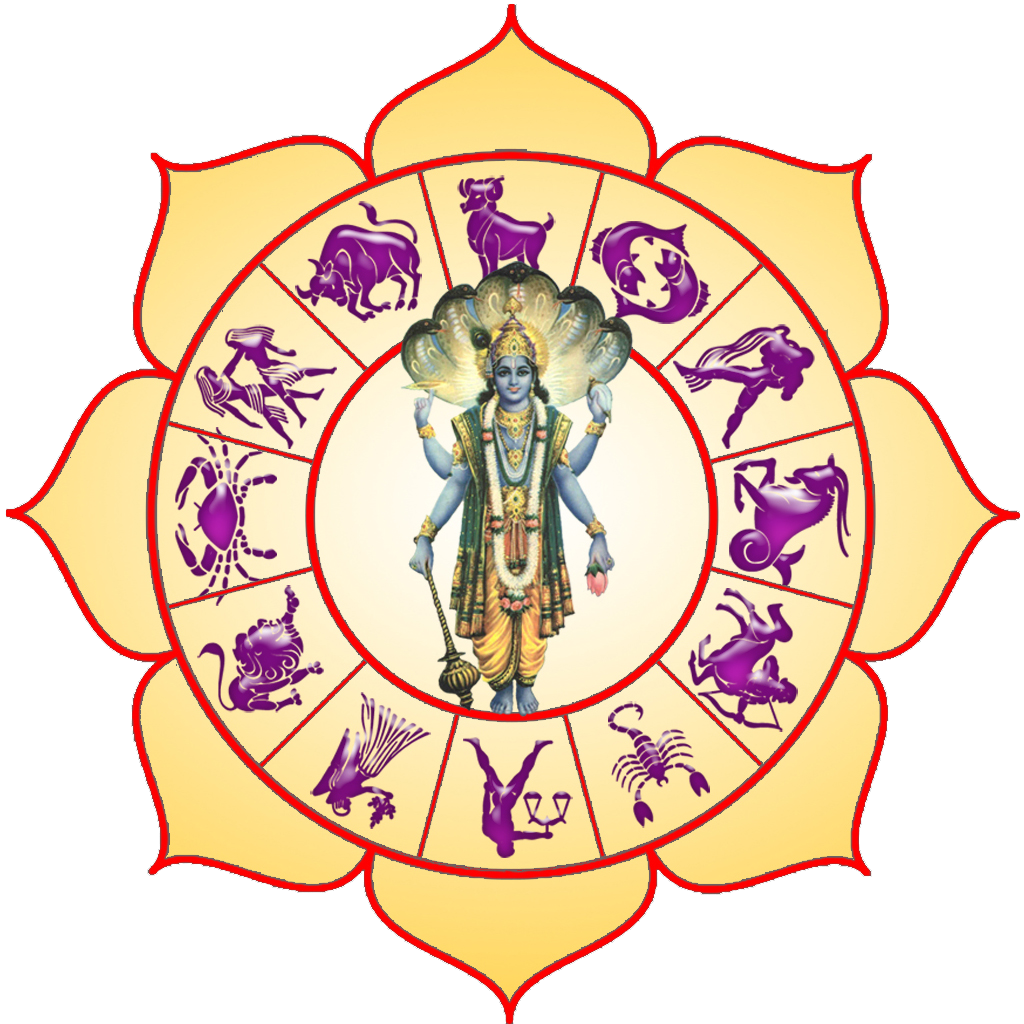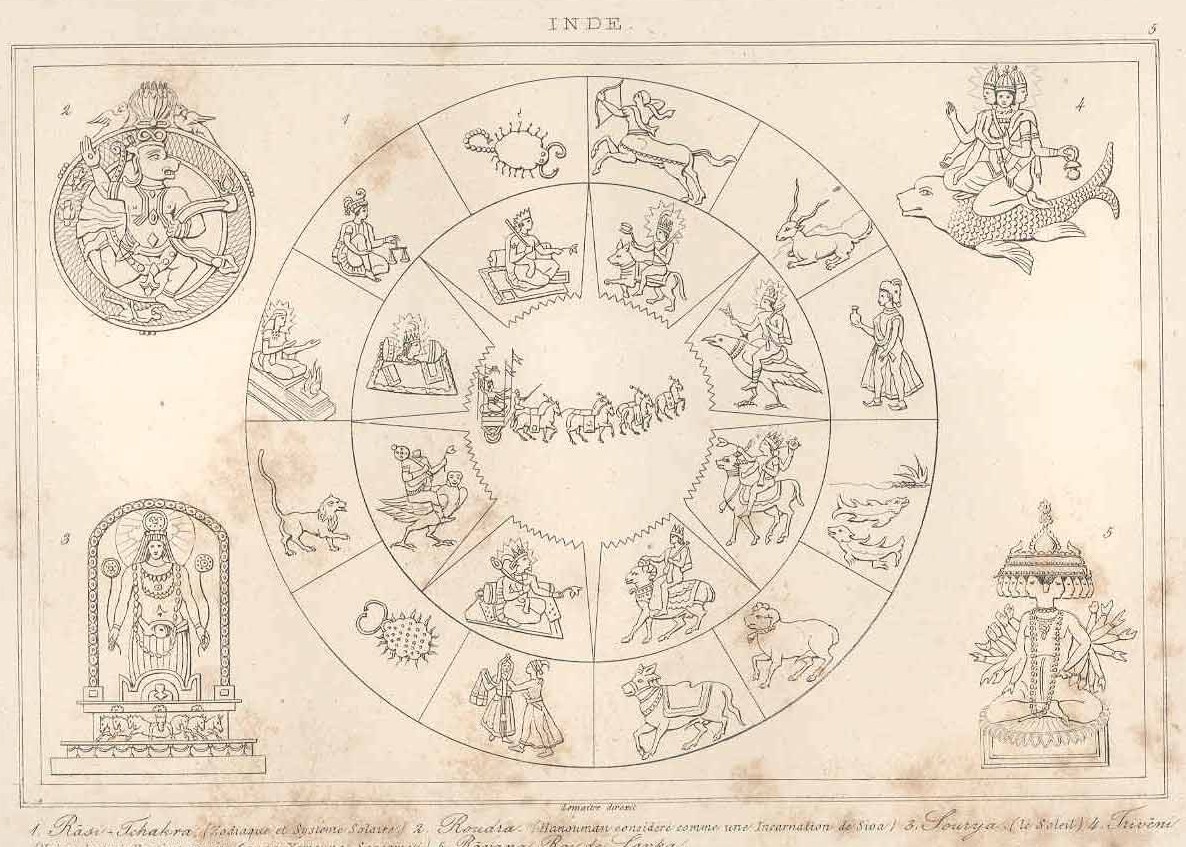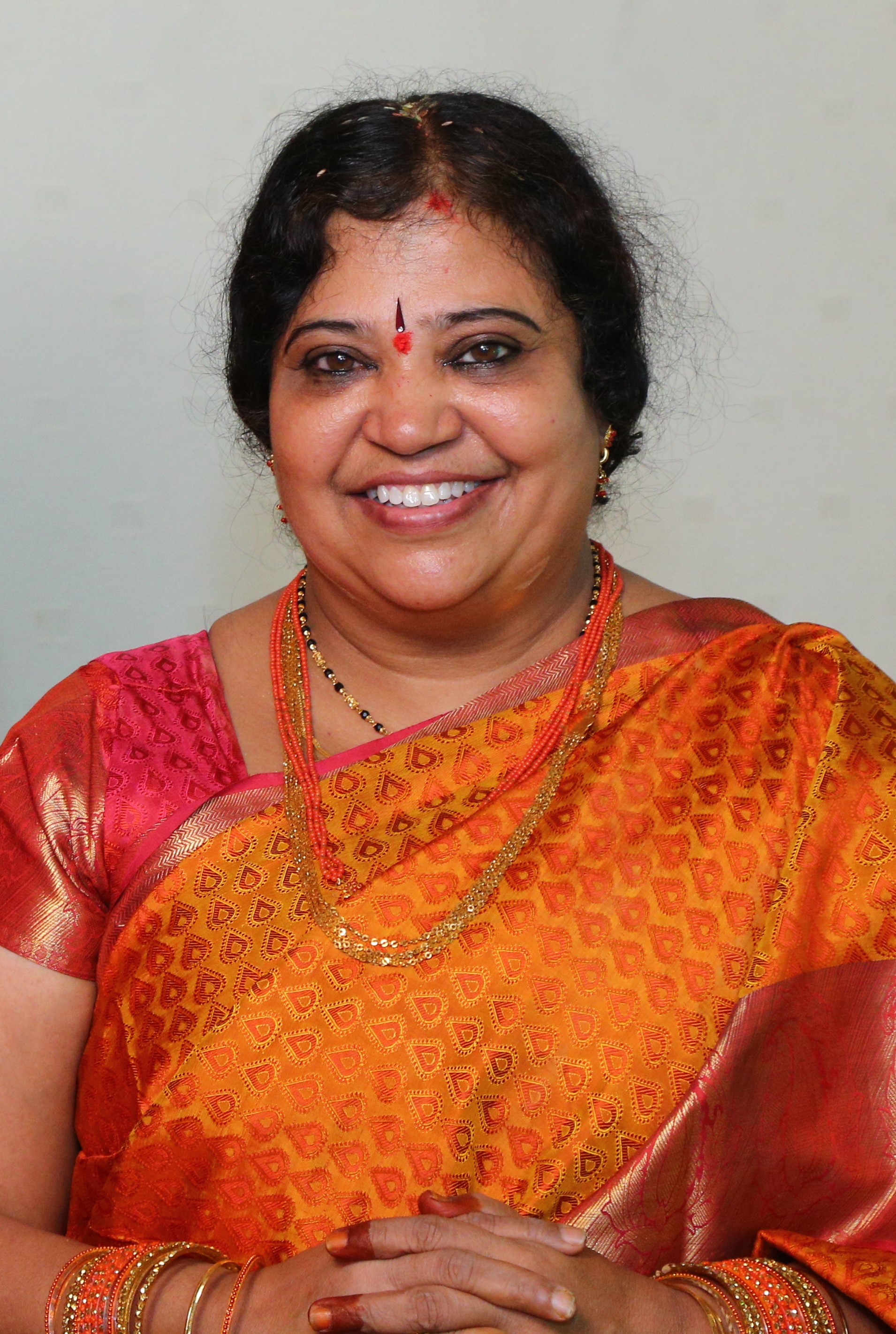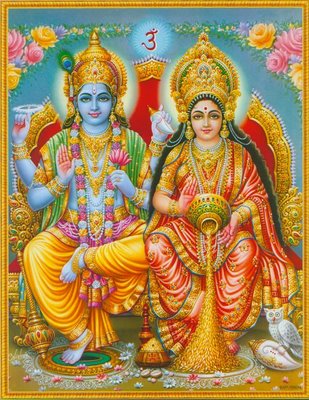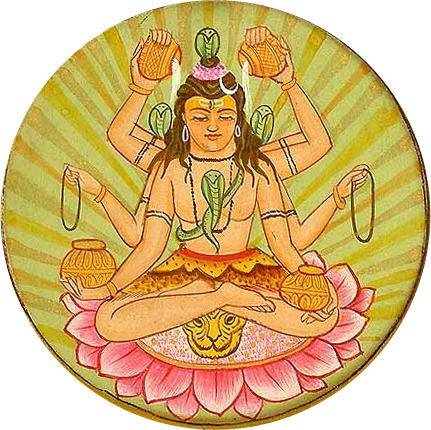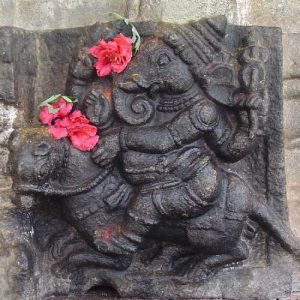 The Gaṇarāja sādhanā for the first year is to be initiated with the teachings of Maharṣi Mudgala (Gaṇeśa Purāṇa).
The Gaṇarāja sādhanā for the first year is to be initiated with the teachings of Maharṣi Mudgala (Gaṇeśa Purāṇa).
Sādhanā Plan
Year-1:
Gaṇeśa [Āstika] – Long life, free from all diseases, removal of all troubles and obstacles in the learning path and life
Parāśara Mantra – digestion of teachings of Parāśara [This is a very specific mantra for Parāśara] ….you will know all the details of these when we have the contact classes.
Year-2: Sūrya Upāsana – Dasākṣarī mantra for great success and prosperity, Navagraha pūjā
Year-3: Kṛṣṇa mantra sādhanā – Karma Yogi [Only the one recommended by Parāśara – which is for jyotiṣa]
Simple procedure
ĀSANA
ĀSTIKA MANTRA
- Gaṇeśa is the giver of faith and the one who removes the doubts and evils caused by Rāhu and tamas graha
- He sits on svāstika maṇḍala
- Maṇḍala Mantra – स्वास्तिकाय नमः (svāstikāya namaḥ) | Draw this on a piece of paper or simply draw the lines on red sindoor (red paint) on the wall on the eastern side of your room at eye level so that you can see it and recite the mantra sitting down
Place the mat (āsana) in front of a picture of Śrī Gaṇeśa with the picture placed at the level of the eyes such that you do not have to look down to the picture. Same level or looking up is beneficial. Sit facing east in some posture you are comfortable in.
Light a ghee lamp in front of the picture or yantra of Gaṇeśa reciting the mantra –
Touch the mat (āsana) with the middle finger and recite the āsana mantra –
Now read the following ‘viniyoga’
सोऽहं बीजं स्वाहा शक्तिः ममाभीष्टसिद्धये जपे विनियोगः।
om asya śrī gaṇeśa mantrasya mudgala ṛṣiḥ virāj chandaḥ gaṇeso devatā
so’haṁ bījaṁ svāhā śaktiḥ mamābhīṣṭasiddhaye jape viniyogaḥ|
Ācamanaṁ
It is the process of cleansing the soul as it is about to perform some good karma and should be pure to imbibe the beneficence of the japa and sādhanā.
Take little water on your right palm (from a clean vessel kept nearby at hand) and swallow it uttering the mantra(s). Wash the palm with water, wipe the lips with the clean palm, wash the palm again.
acyutāya namaḥ | anantāya namaḥ | govindāya namaḥ
Ṛṣyādi nyāsa
Nyāsa is the procedure by which the sounds associated with the mantra (or its devatā) are placed and fixed at certain body parts. The ‘ṛṣi and others’ nyāsa places the mantra-ṛṣi, mantra chandas, devatā, bīja and śaktī at the respective points of the body.
| ॐ मुद्गलाय ऋषये नमः शिरसि | om mudgalāya ṛṣaye namaḥ śirasi | Touch whorl on head |
| ॐ विराट छन्दसे नमः मुखे | om virāṭ chandase namaḥ mukhe | Touch the lips |
| ॐ गणराज देवतायै नमः हृदये | om gaṇarāja devatāyai namaḥ hṛdaye | Touch heart |
| ॐ सोऽहं बीजाय नमः गुह्ये | om so’haṁ bījāya namaḥ guhye | Touch private part |
| ॐ स्वाहा शक्तये नमः पादयोः | om svāhā śaktaye namaḥ pādayoḥ | Touch left foot |
Ṣaḍāṅga nyāsa
This is the procedure of placing the mantra sounds or bīja (with tattva) in the six body parts. This is the real protection of the body. If this is done before the mantra japa then the body is also protected against any evils, diseases and suffering.
| ॐ ग्रां हृदयाय नमः | om grāṁ hṛdayāya namaḥ [pṛthvi] | Touch heart |
| ॐ ग्रीं शिरसे स्वाहा | om grīṁ śirase svāhā [jala] | Touch top of head |
| ॐ ग्रूं शिखायै वषट | om grūṁ śikhāyai vaṣaṭ [agni] | Touch whorl on head |
| ॐ ग्रैं कवचाय हुं | om graiṁ kavacāya huṁ [vāyu] | Cross hands over chest |
| ॐ ग्रौं नेत्र-त्रयाय वौषट | om grauṁ netra-trayāya vauṣaṭ [ākāśa] | Touch three eyes with 3 fingers |
| ॐ ग्रः अस्त्राय फट | om graḥ astrāya phaṭ [manas] | Swirl palms thrice and strike three fingers of right hand on left palm |
Mālā
A good rosary to use is the rudrākṣa mala of small (not very small) beads of 54 beads. Use the middle finger and thumb to push the beads away from your body as you recite each mantra and never cross the head bead. Flip the rosary using the middle and ring finger. With some practise this will become easy. The index finger is called ‘tarjani’ should not touch the rosary under any circumstances. It incites the devatā to anger which goes against the grain of this sādhanā. The Gaṇarāja sādhanā is an extremely peaceful sādhanā which will completely calm the mind.
Prefer the mala you are already using for any other sādhanā as then this mantra will also support the other mantras and devatā. The best rosary is one which is made of coral beads but that can be expensive. Rudrākṣa beads are also very auspicious in addition to crystal.
Mantra
Choose name based on 12 Gaṇeśa names chosen by Śrī Nārada or other list based on your LAGNA
Gaṇeśa Siddha Mantra
Sit facing east in the morning and keep a pen and BPHS copy in front of Gaṇeśa (Svāstika with 4 dots or picture of Gaṇeśa )
You have to decide either to do this mantra 108 times everyday, or those of you who are ready for the rigor of sādhanā should recite this 15 mala everyday except on the caturthī of every month when you do 22 mala. That is a HUGE number of mantra to do. Further the period of sādhanā is ONE YEAR from One Gaṇeśa Pūjā to another in the next year. But the fruits of this sādhanā are extremely tasty. If you can take up this challenge and be resolved to be strong. Besides all other fruits, it will give you a tremendous level of confidence in the subject. You can become an authority in Jyotiṣa.
Like all scriptures and Thakur Ramakrishna teaches, Japa is the tapasyā of Kali yuga. There is no other path for tapasyā. If you decide to take up the challenge of the complete siddhi of finishing 600,000 mantra in one year at the rate explained (15 mala everyday + 22 mala on caturthī), please write to me privately.
Don’t ask me any more questions. Note: Choose mantra based only on Lagna
| Meṣa ॐ सोऽहं वक्रतुण्डाय स्वाहा om so’haṁ vakratuṇḍāya svāhā |
Tula ॐ सोऽहं विघ्नराजाय स्वाहा om so’haṁ vighnarājāya svāhā |
| Vṛṣabha ॐ सोऽहं एकदन्ताय स्वाहा om so’haṁ ekadantāya svāhā |
Vṛścika ॐ सोऽहं धूम्रवर्णाय स्वाहा om so’haṁ dhūmravarṇāya svāhā |
| Mithuna ॐ सोऽहं कपिलाक्षाय स्वाहा om so’haṁ kapilākṣāya svāhā |
Dhanus ॐ सोऽहं भालचन्द्राय स्वाहा om so’haṁ bhālacandrāya svāhā |
| Karkaṭa ॐ सोऽहं गजवक्त्राय स्वाहा om so’haṁ gajavaktrāya svāhā |
Makara ॐ सोऽहं विनायकाय स्वाहा om so’haṁ vināyakāya svāhā |
| Siṁha ॐ सोऽहं लम्बोदराय स्वाहा om so’haṁ lambodarāya svāhā |
Kumbha ॐ सोऽहं गणपतये स्वाहा om so’haṁ gaṇapataye svāhā |
| Kanyā ॐ सोऽहं विकटाय स्वाहा om so’haṁ vikaṭāya svāhā |
Mina ॐ सोऽहं गजाननाय स्वाहा om so’haṁ gajānanāya svāhā |
daśākṣaramantrastotram ||
Recite this stotra once at the end of the Japa
मुद्गल उवाच।
असच्छक्तिश्च सत्सूर्यः समो विष्णुर्महामुने।
अव्यक्तः शङ्करस्तेषां संयोगे गणपो भवेत्॥ १॥
संयोगे मायया युक्तो गणेशो ब्रह्मनायकः।
अयोगे मायया हीनो भवति मुनिसत्तमा॥ २॥
संयोगायोगयोर्योगे योगो गणेशसंज्ञितः।
शान्तिभ्यः शन्तिदः प्रोक्तो भजने भक्तिसंयुतः॥ ३॥
एवमुक्त्वा गणेशस्य ददौ मन्त्रं स मुद्गलः।
एकाक्षरं विधियुतं ततः सोऽन्तर्हितोऽभवत्॥ ४॥
ततोऽहं गणराजं तमभजं सर्वभावतः।
तेन शान्ति समयुक्तश्चरामि त्वकुतोभयः॥ ५॥
न गणेशात्परं ब्रह्म न गणेशात्परं तपः।
न ग़णेशात्परं कर्म ज्ञानं न गणपात्परम्॥ ६॥
न गणेशात्परो योगो भक्तिर्न गणपात्परा।
तस्मात्स सर्वपूज्योऽयं सर्वादौ सिद्धिदायकः॥ ७॥
गणेशानं परित्यज्य कर्मज्ञानादिकं चरेत्।
तत्सर्वं निष्फलं याति भस्मनि प्रहुतं यथा॥ ८॥
सर्वांस्त्यज्य गणेशं यो भजतेऽनन्यचेतसा।
सर्वसिद्धिं लभेत्सद्यो ब्रह्मभूतः स कथ्यते॥ ९॥
एवमुक्त्वाऽत्रितस्तस्मै ददौ मन्त्रं दशाक्षरम्।
विधियुक्तं ततः साक्षादन्तर्धानं चकार ह॥ १०॥
इति दशाक्षरमन्त्रस्तोत्रं समाप्तम्।
mudgala uvāca |
asacchaktiśca satsūryaḥ samo viṣṇurmahāmune
avyaktaḥ śaṅkarasteṣāṁ saṁyoge gaṇapo bhavet || 1||
saṁyoge māyayā yukto gaṇeśo brahmanāyakaḥ
ayoge māyayā hīno bhavati munisattamā || 2||
saṁyogāyogayoryoge yogo gaṇeśasaṁjñitaḥ |
śāntibhyaḥ śantidaḥ prokto bhajane bhaktisaṁyutaḥ || 3||
evamuktvā gaṇeśasya dadau mantraṁ sa mudgalaḥ |
ekākṣaraṁ vidhiyutaṁ tataḥ so’ntarhito’bhavat ||
tato’haṁ gaṇarājaṁ tamabhajaṁ sarvabhāvataḥ
tena śānti samayuktaścarāmi tvakutobhayaḥ ||
na gaṇeśātparaṁ brahma na gaṇeśātparaṁ tapaḥ |
na ġaṇeśātparaṁ karma jñānaṁ na gaṇapātparam || 6||
na gaṇeśātparo yogo bhaktirna gaṇapātparā |
tasmātsa sarvapūjyo’yaṁ sarvādau siddhidāyakaḥ || 7||
gaṇeśānaṁ parityajya karmajñānādikaṁ caret |
tatsarvaṁ niṣphalaṁ yāti bhasmani prahutaṁ yathā || 8||
sarvāṁstyajya gaṇeśaṁ yo bhajate’nanyacetasā
sarvasiddhiṁ labhetsadyo brahmabhūtaḥ sa kathyate || 9||
evamuktvā’tritastasmai dadau mantraṁ daśākṣaram |
vidhiyuktaṁ tataḥ sākṣādantardhānaṁ cakāra ha || 10||
iti daśākṣaramantrastotraṁ samāptam |
